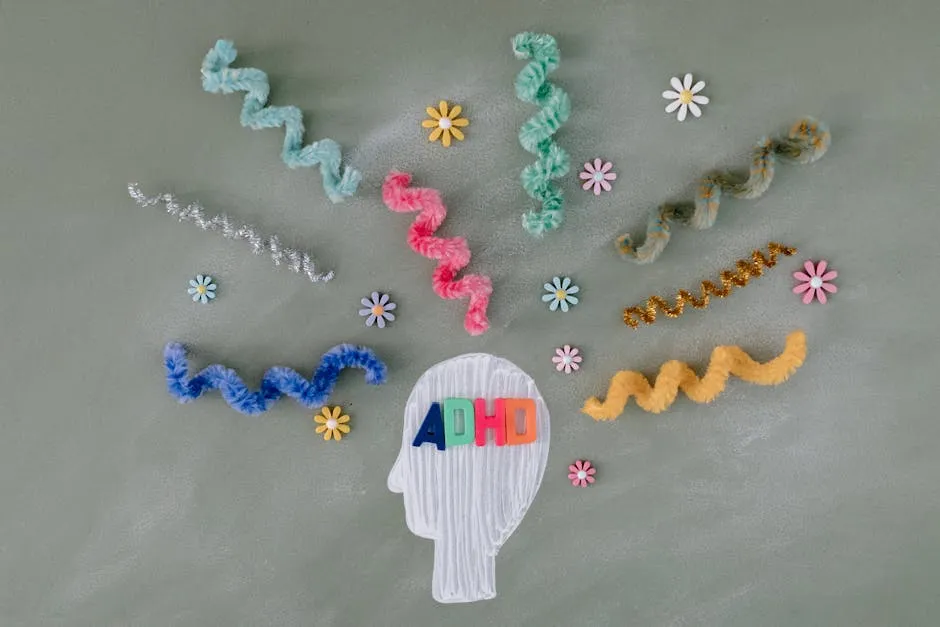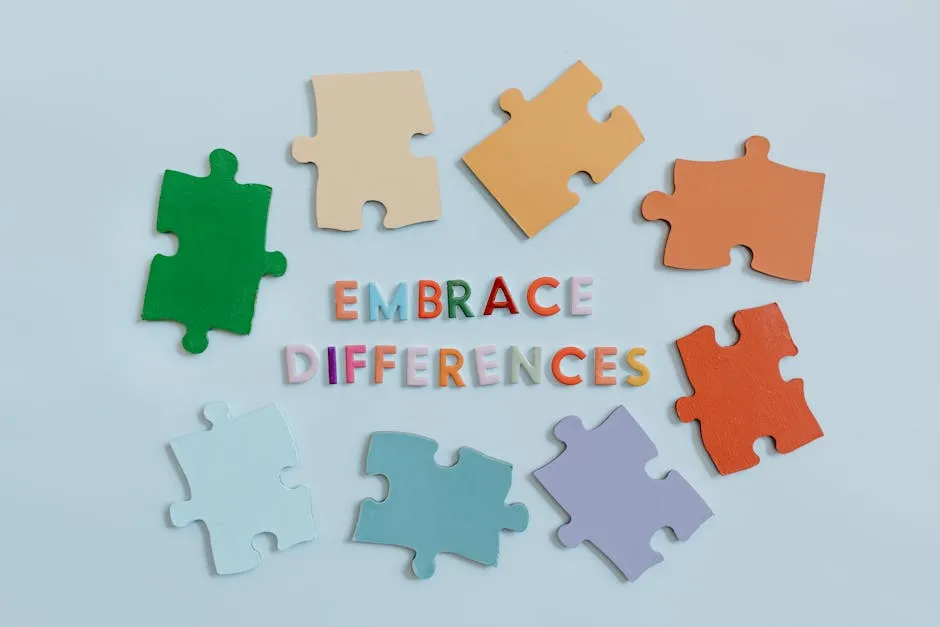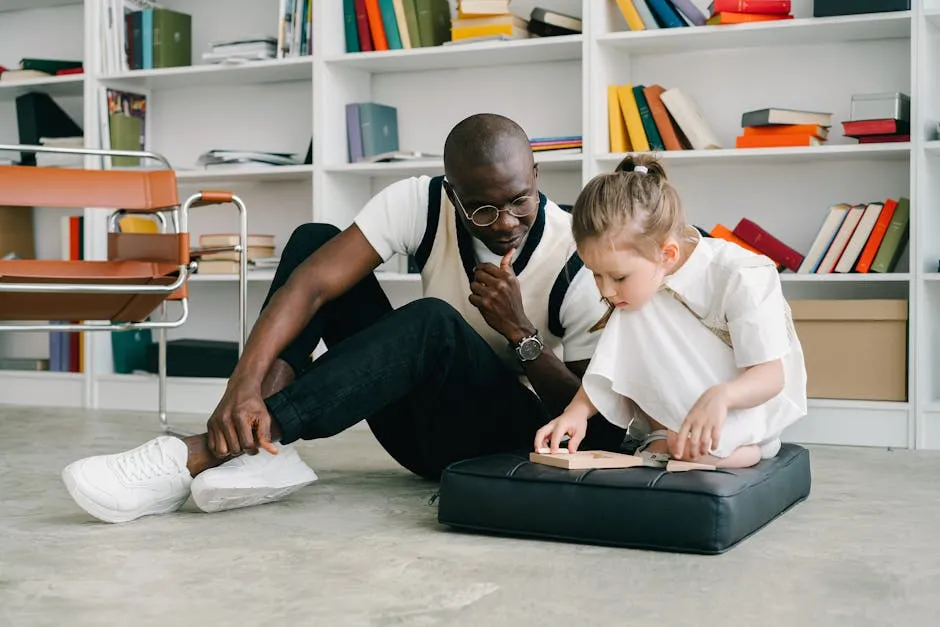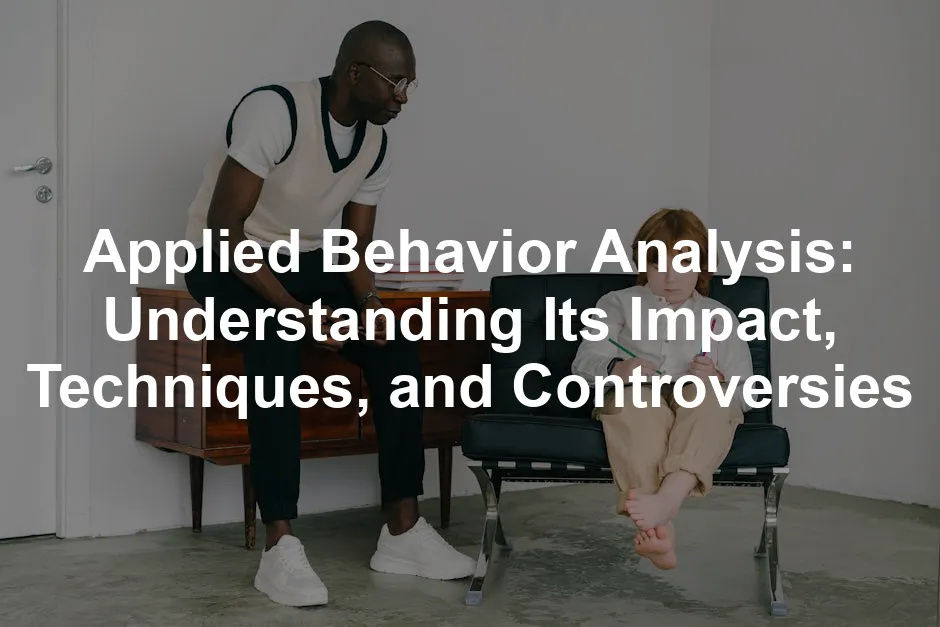Introduction
In a world where behavior often dictates our interactions and success, understanding how to effectively modify behavior is crucial—especially for those on the autism spectrum. Enter Applied Behavior Analysis (ABA), a therapy that has become synonymous with autism treatment but is much more than just a method for changing undesired behaviors. It’s a scientifically backed approach that blends psychology with practical application, making it a fascinating subject to explore.
ABA focuses on the principles of learning and behavior modification. Its primary aim is to enhance useful behaviors while minimizing those that hinder development. This makes it particularly valuable for children with autism, who may struggle with communication and social interactions.
The journey of ABA dates back to the 1960s, when Dr. O. Ivar Lovaas pioneered its use in treating autistic children. Since then, it has evolved significantly, incorporating various techniques and methodologies. Today’s ABA practices emphasize positivity, engagement, and fun—showing that learning can be enjoyable!
However, ABA is not without its controversies. Critics often voice concerns regarding its traditional methods, which some perceive as harsh or too focused on compliance. The ongoing debate about its ethical implications, particularly regarding neurodiversity, adds layers to this already complex topic.
In this article, we will unpack the intricacies of ABA, its historical roots, methodologies, and the ongoing debates surrounding its effectiveness and ethics. This exploration aims to provide readers with a thorough understanding of the principles, practices, and controversies associated with Applied Behavior Analysis—and why it matters in today’s society. Let’s get started!

Summary
This article explores Applied Behavior Analysis (ABA), a therapeutic approach primarily used for individuals with autism. We will define ABA, discuss its historical context, and highlight its various techniques and applications. The article will also examine the critical components of an effective ABA program, including individualization, reinforcement strategies, and the roles of certified professionals in delivering these therapies.
We will explore the evidence supporting ABA, discussing its recognition as an evidence-based treatment by organizations like the US Surgeon General and the American Psychological Association. However, the conversation wouldn’t be complete without addressing the controversies that accompany ABA—specifically, the criticisms regarding its traditional methods, perceived lack of respect for neurodiversity, and the ethical implications of behavior modification practices.
Through a balanced lens, we will present the arguments for and against ABA, emphasizing the evolution of its practices over the decades. As we conclude, readers will gain a comprehensive understanding of ABA, its benefits, limitations, and the importance of choosing qualified practitioners to ensure the therapy is delivered safely and effectively.

What is Applied Behavior Analysis?
Definition and Overview
Applied Behavior Analysis (ABA) is a therapeutic approach rooted in the science of learning and behavior. It focuses on understanding how behavior works, how it’s influenced by the environment, and how effective learning occurs. The primary aim of ABA therapy is to increase helpful behaviors while decreasing those that hinder development. This method is especially beneficial for children with autism, helping them improve language skills, social interactions, and self-management.
The roots of ABA lie in behaviorism, a field founded by psychologists like B.F. Skinner. This approach emphasizes observable behaviors rather than internal thoughts or emotions. Learning theories also significantly influence ABA, particularly operant conditioning, which posits that behaviors can be modified through reinforcement or punishment. When children engage in positive behaviors, they receive rewards, making them more likely to repeat those actions. Conversely, negative behaviors may receive less attention, leading to their eventual decline.

Historical Context
The history of ABA is marked by significant contributions from several key figures. B.F. Skinner is often credited with laying the groundwork for behaviorism. He studied how reinforcement affects behavior, paving the way for future applications in therapy. In the 1960s, Dr. O. Ivar Lovaas emerged as a pioneer in applying these principles specifically to autism treatment. His groundbreaking work demonstrated that intensive behavioral interventions could lead to substantial improvements in autistic children’s functioning.
One of the pivotal moments in ABA’s history occurred with the establishment of the UCLA Young Autism Project, which utilized Lovaas’s techniques to support children with autism. The methods employed included Discrete Trial Training (DTT), a highly structured approach that breaks skills into small, manageable parts. Over the decades, ABA has evolved, adapting to new research and incorporating a variety of techniques that emphasize positive learning experiences.
In the late 20th century, the field saw the publication of the Journal of Applied Behavior Analysis, which played a crucial role in disseminating research findings and promoting best practices. As a result, ABA has been recognized by various health organizations as an evidence-based practice. This recognition highlights its effectiveness in improving skills across numerous domains, including communication, socialization, and daily living skills.
Today, ABA remains a vital intervention for individuals with autism and other developmental disorders. Continuous research and advocacy help refine its methodologies, ensuring that practices evolve to address the needs of the individuals they serve. With an emphasis on individualized treatment plans and positive reinforcement, ABA aims to empower individuals, enabling them to thrive in their daily lives.
In summary, Applied Behavior Analysis is not just about modifying behavior; it’s about fostering growth, independence, and a successful integration into society for those with autism and related challenges. Its rich history and strong foundation in behaviorism and learning theories make it a critical component of modern therapeutic practices.

How ABA Works
Fundamental Principles
At the core of ABA are fundamental principles like reinforcement and behavior modification. Reinforcement involves providing a reward to increase the likelihood of a desired behavior. For example, if a child successfully communicates their needs, they might receive praise or a small treat. This positive reinforcement encourages the child to continue using their communication skills.
The A-B-C model is essential in understanding how ABA operates. This model consists of three components: Antecedent, Behavior, and Consequence. The antecedent is what triggers a behavior, such as a teacher giving a direction. The behavior is the individual’s response, like asking a question. Finally, the consequence is what follows the behavior, which can either reinforce the action or discourage it.

Techniques Used in ABA
ABA therapists employ various techniques tailored to individual needs. One popular method is Discrete Trial Training (DTT). This structured approach involves one-on-one sessions where skills are broken down into small, teachable units. Each unit is taught with reinforcement, making learning clear and manageable.
Another effective technique is Pivotal Response Treatment (PRT). Unlike DTT, PRT is less structured and focuses on pivotal skills that can lead to broader improvements. It encourages natural learning in play-based settings, making it more engaging for children.
The Early Start Denver Model (ESDM) combines traditional ABA techniques with a play-based approach specifically designed for young children. This model integrates multiple goals into each activity, making learning enjoyable and meaningful.

Individualization of Treatment
A significant aspect of ABA is the individualization of treatment. Programs are tailored to meet the unique needs of each child. This requires comprehensive assessments conducted by Board Certified Behavior Analysts (BCBAs), who design personalized plans that reflect the child’s strengths and challenges.
Assessment methods may include direct observations, parent interviews, and standardized tests. These assessments enable therapists to identify target areas for improvement, such as communication, social skills, or self-care. By focusing on the individual’s specific needs, ABA aims to foster meaningful growth and development.
In conclusion, ABA is a highly effective, research-backed approach to behavior modification. Its principles of reinforcement, the A-B-C model, and various techniques allow therapists to create personalized programs that empower individuals to thrive. As therapy evolves, it remains vital in supporting those with autism and other developmental challenges.

Applications of ABA
In Autism Treatment
Applied Behavior Analysis (ABA) is a cornerstone in autism treatment. It’s often applied in educational settings and therapeutic contexts, brilliantly tailored to meet the needs of children on the spectrum. ABA helps children gain vital skills, from communication to social interactions, making day-to-day activities more manageable.
In classrooms, teachers utilize ABA techniques to enhance learning. They break down complex tasks into smaller, more digestible steps. This structured approach not only aids comprehension but also builds confidence. For example, a child learning to ask for help might first practice saying, “Help, please,” in a safe environment, gradually leading to real-life applications.
Success stories abound in the world of ABA. Research from Autism Speaks shows that early and intensive ABA therapy can lead to significant improvements. A staggering 50% of children who receive early ABA treatment achieve normal functioning levels. This statistic speaks volumes about the therapy’s transformative potential.
Moreover, numerous case studies highlight individuals who have thrived thanks to ABA. Take Sarah, for instance. With consistent ABA therapy, she transitioned from minimal communication to engaging in meaningful conversations. Her journey showcases how ABA isn’t just about behavior modification; it’s about unlocking potential.
Statistics further support ABA’s effectiveness. A meta-analysis published in the Journal of Autism and Developmental Disorders found that children who underwent ABA therapy improved significantly in social skills, communication, and daily living skills. Such evidence underscores the importance of ABA in autism treatment and its ability to foster independence and social integration.

Beyond Autism
ABA’s applications extend far beyond autism therapy. Its principles have found relevance in various fields, including gerontology, organizational behavior, and rehabilitation.
In gerontology, ABA helps older adults navigate challenges associated with aging. By applying reinforcement techniques, caregivers can encourage positive behaviors, such as maintaining social interactions or adhering to prescribed exercise regimens. This approach not only enhances the quality of life but also promotes longevity.
The corporate world has also embraced ABA. Organizations apply behavior analysis to improve employee performance and satisfaction. For instance, businesses use ABA techniques to enhance productivity and teamwork. By understanding behavioral principles, companies can create environments that reinforce positive behaviors, leading to a more engaged workforce.
Rehabilitation centers utilize ABA to aid individuals recovering from injuries or managing chronic conditions. Therapists apply behavioral strategies to encourage adherence to rehabilitation programs, making recovery more effective. By reinforcing small victories, patients remain motivated and focused on their goals.
In summary, ABA’s versatility makes it a powerful tool across various domains. Whether supporting children with autism, enhancing the lives of seniors, improving workplace dynamics, or facilitating rehabilitation, ABA’s impact is profound. This broad application showcases the adaptability and effectiveness of behavior analysis in improving lives across the lifespan.

Evidence Supporting ABA
Research and Studies
The effectiveness of Applied Behavior Analysis (ABA) is well-documented through numerous studies. Research consistently demonstrates its positive impacts, particularly for children with autism. For instance, a comprehensive review of studies published in 2012 concluded that early intensive ABA therapy significantly improves communication, social skills, and daily living skills.
Furthermore, the US Surgeon General and the American Psychological Association recognize ABA as an evidence-based practice. This acknowledgment stems from rigorous research demonstrating that ABA techniques yield measurable, positive changes in behavior. Such validation reinforces the credibility of ABA as a preferred treatment option for autism.
A 2014 meta-analysis in the journal Behavioral Interventions emphasized that children receiving ABA therapy showed remarkable gains in developmental milestones compared to those who did not. These findings highlight ABA’s role in fostering growth and development, supporting its continued use in therapy.

Limitations of the Evidence
While the evidence supporting ABA is substantial, it’s essential to recognize some limitations. Critics often point out gaps in research quality. For example, many studies rely on small sample sizes or lack rigorous control groups. This raises questions about the generalizability of findings across diverse populations.
Additionally, ethical concerns have emerged regarding traditional ABA practices. Advocates for neurodiversity argue that some methods, particularly those used in the past, may prioritize conformity over individual needs. This criticism has prompted ongoing discussions about improving ABA’s ethical standards.
In conclusion, while ABA boasts strong evidence supporting its effectiveness, ongoing scrutiny highlights the need for continuous improvement in research methodologies and ethical practices. This balanced perspective ensures that ABA remains a relevant and beneficial approach in the ever-evolving landscape of behavioral therapy.

Controversies and Criticisms
Ethical Concerns
Applied Behavior Analysis (ABA) has long been a favored approach for treating autism. However, it’s not without controversy. Critics argue that traditional ABA practices can sometimes overlook the emotional well-being of individuals, particularly autistic children. The focus on compliance can lead to methods that prioritize conformity over individuality. One of the main ethical concerns revolves around the use of aversives, which, in the past, included punishment as a means to modify behavior. This practice raised alarms about potential trauma inflicted on vulnerable populations.
Many argue that emphasizing obedience can foster a negative learning environment. For instance, some children may feel pressured to behave in certain ways, leading to anxiety rather than genuine skill acquisition. This pressure can transform learning into a chore, stripping it of joy and curiosity. Critics maintain that such practices could lead to long-term psychological effects, including feelings of inadequacy and diminished self-worth.
Moreover, the ethical implications extend to the lack of agency given to autistic individuals. Critics from the neurodiversity movement advocate for acceptance of autistic traits rather than attempting to modify them. They argue that instead of focusing solely on changing behaviors, ABA should also celebrate and support the unique ways in which autistic individuals experience the world. This perspective emphasizes understanding rather than altering behavior, marking a significant shift in how we view autism and therapeutic approaches.
In response to these concerns, some ABA practitioners have begun to adopt more compassionate methods. They focus on creating supportive environments that prioritize the individual’s emotional and psychological well-being. The evolution of ABA practices reflects an ongoing dialogue about ethics and effectiveness, urging practitioners to consider the holistic needs of those they serve.

Perspectives from the Neurodiversity Movement
The neurodiversity movement has gained momentum in recent years, bringing critical viewpoints to the forefront of conversations about ABA. Advocates argue that traditional ABA methods often aim to “normalize” autistic individuals, which can be harmful. They contend that these practices can erase the very characteristics that define autism, such as unique communication styles and sensory sensitivities. This perspective challenges the notion that neurotypical behavior should be the standard.
Critics assert that the emphasis on compliance can lead to a lack of respect for individual differences. Instead of merely attempting to modify behavior, advocates argue for approaches that foster acceptance and inclusion. They believe that therapy should focus on helping autistic individuals thrive in ways that are authentic to them.
In response to such criticisms, some ABA practitioners are shifting their methodologies. They are increasingly incorporating principles that prioritize individuality, such as focusing on the child’s interests and strengths. This has resulted in more engaging and playful approaches to learning, where the child’s unique perspective is valued.
The conversation around ABA is evolving, reflecting a growing understanding of autism and neurodiversity. As practitioners adapt their approaches, the integration of neurodiversity perspectives can lead to more effective and compassionate therapeutic practices. This shift not only addresses the concerns of critics but also enriches the therapy experience for individuals on the spectrum, allowing them to embrace their identity while still gaining valuable skills.

Conclusion
Understanding Applied Behavior Analysis (ABA) requires a nuanced perspective. While it remains a vital therapy for many children with autism, ongoing discussions about its practices and effectiveness are crucial. Ethical considerations, particularly regarding the emotional well-being of individuals, must be at the forefront of these conversations.
The emergence of the neurodiversity movement offers valuable insights, urging practitioners to prioritize acceptance and celebrate individuality rather than conformity. As the field evolves, it is imperative that practitioners remain open to dialogue, adapting their methods to better serve the community.
In summary, ABA can be a powerful tool for helping individuals on the autism spectrum, but it’s essential to consider both its benefits and drawbacks. A balanced approach that values ethical considerations and embraces neurodiversity can lead to more effective and compassionate therapeutic practices. By fostering a supportive environment, we can empower autistic individuals to thrive while respecting their unique identities.

FAQs
What is the goal of ABA?
The main goal of Applied Behavior Analysis (ABA) is to increase positive behaviors while reducing negative ones. ABA seeks to teach essential skills, such as communication and social interactions, to help individuals thrive in everyday situations. By using reinforcement techniques, ABA encourages the repetition of desired behaviors, empowering children and adults alike. It’s not just about compliance; it’s about growth and independence.
How long does ABA therapy typically last?
The duration of ABA therapy varies based on individual needs and goals. Typically, sessions last from 20 to 40 hours per week, especially for young children. Many families commit to this intensive therapy for two to three years to see significant improvements. However, some children may require ongoing support as they grow. Regular assessments help determine the right path for each individual.
Is ABA therapy suitable for all autistic individuals?
Not every autistic person will benefit from ABA therapy. While many find it helpful, some may prefer different approaches. It’s essential to consider each individual’s unique preferences, strengths, and challenges. ABA is most effective for those who thrive in structured environments. Parents and caregivers should consult with professionals to find the best therapy options tailored to their child’s needs.
What should I look for in an ABA provider?
When searching for an ABA provider, prioritize qualifications and experience. Look for Board Certified Behavior Analysts (BCBAs) with a solid track record in autism treatment. Ask about the provider’s approach, how they personalize therapy plans, and what kind of data they collect to measure progress. Communication is key, so ensure they involve parents in the therapy process. A good fit between the therapist and child is vital for success!
Are there alternatives to ABA for autism treatment?
Yes, there are several alternatives to ABA therapy. Options like speech and language therapy, occupational therapy, or play therapy focus on different aspects of development. Some families may explore naturalistic approaches like Developmental, Individual Difference, Relationship-Based (DIR) therapy or Relationship Development Intervention (RDI). Each option has its philosophy, so it’s crucial to research and find the right fit for your child’s unique needs.
For those looking to dive deeper into the world of autism, consider reading ABA: Applied Behavior Analysis, a comprehensive book that outlines the principles and applications of this therapy. It’s a great starting point for understanding how ABA can help individuals on the autism spectrum.
There’s something special about the sensory experience of reading a print book. Many children enjoy the quiet of bedtime reading, making it a cherished part of their day. A book light can make these late-night reading sessions even more enjoyable, providing the perfect ambiance for young readers to unwind. Make bedtime reading a cozy ritual with a The Reason I Jump: The Inner Voice of a Thirteen-Year-Old Boy with Autism. It’s an excellent companion for late-night adventures through their favorite print stories, allowing them to read comfortably without disturbing others.
As we explore the nuances of ABA, it’s also essential to equip yourself with practical tools that can enhance learning and development. Consider the Autism Spectrum Disorder: What Every Parent Needs to Know. This book provides valuable insights and strategies to help parents navigate the challenges of raising a child on the spectrum.
When it comes to enhancing social skills, the right resources can make a significant difference. The Social Skills for Kids: The Ultimate Guide to Helping Your Child with Autism is a fantastic resource that offers practical activities and strategies to foster social interactions. It’s perfect for parents looking to enhance their child’s social skills.
And let’s not forget about the importance of play in learning. The The Complete Guide to Asperger’s Syndrome provides insights into the unique ways children with Asperger’s experience the world and offers practical advice for parents and educators alike.
ABA is not just about academic skills; it also encompasses emotional well-being. The The Autism Workbook: An Interactive Guide for Children is an engaging way to help children understand their feelings and develop coping strategies. It’s a wonderful tool to support emotional growth.
For those looking to address sensory issues, consider The Out-of-Sync Child: Recognizing and Coping with Sensory Processing Disorder, a book that provides insights into sensory processing issues and practical strategies for support.
When it comes to teaching essential skills, the The Verbal Behavior Approach: How to Teach Children with Autism and Related Disorders is a must-have for parents and educators alike. This book presents a clear framework for teaching language and communication skills to children on the spectrum.
To further enhance learning through play, consider incorporating LEGO Classic Medium Creative Brick Box into your child’s routine. Building with LEGO not only boosts creativity but also enhances fine motor skills and problem-solving abilities.
For some hands-on fun, the Melissa & Doug Wooden Puzzles can be a fantastic way to engage children while developing their cognitive skills. These puzzles promote problem-solving and hand-eye coordination in a fun and interactive way.
Art can be a wonderful medium for expression, and the Play-Doh Modeling Compound 36-Pack Case provides endless opportunities for creativity and sensory play. It’s a great way for kids to express themselves while enhancing their fine motor skills.
Additionally, a Kinetic Sand, Beach Sand Kingdom Playset can provide tactile stimulation and hours of fun. This sensory play can be particularly beneficial for children who are on the autism spectrum, as it engages their senses and promotes creativity.
To help with focus and calming, consider introducing a Fidget Spinner Toy to your child’s toolkit. These small toys can help children manage anxiety and improve focus, making them a great addition to any learning environment.
Lastly, for those looking to create a calming atmosphere, a Noise Cancelling Headphones can be a game-changer for children who are sensitive to auditory stimuli. These headphones can help create a peaceful environment for learning and relaxation.
Please let us know what you think about our content by leaving a comment down below!
Thank you for reading till here 🙂
All images from Pexels




